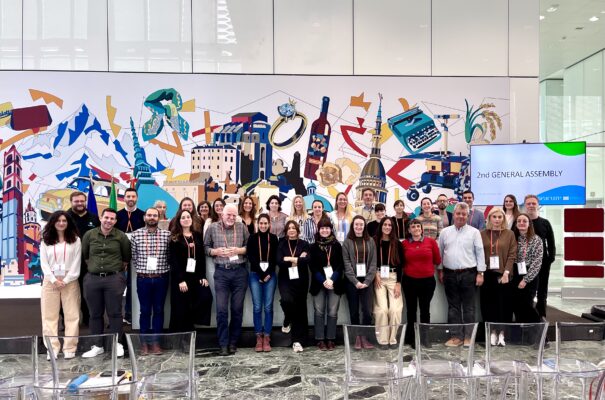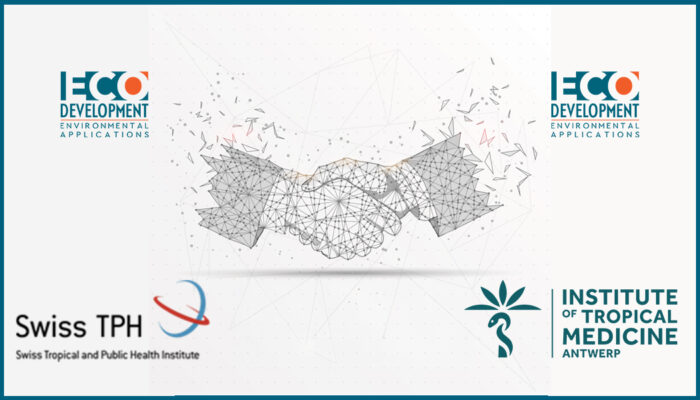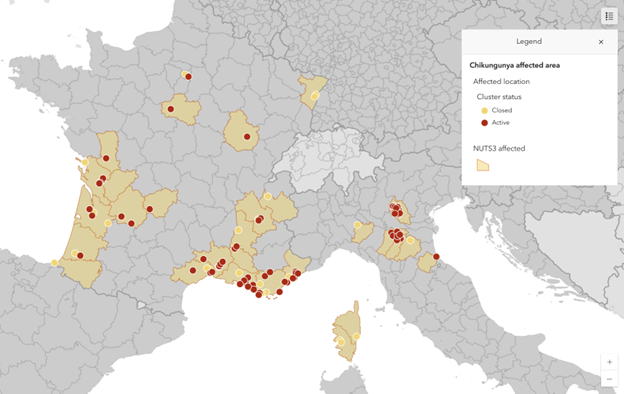Interview with Sandra Gewehr, Director of Research and Development at Ecodevelopment, at the Athens Macedonian Press Agency regarding cases of Chikungunya and Dengue fever in the EU in 2025.
The “tiger” of Asia. The black-and-white striped mosquito that arrived in Europe in the mid-1990s is now reigniting EU concerns about new epidemics spread by mosquitoes.
As Sandra Gewehr, director of the R&D department of the company Ecodevelopment and former president of the European Mosquito Control Association (EMCA), which specializes in operational research for mosquito control programs, explained to APE-MPE, “in the case of the West Nile virus, the transmission is done with the common mosquito, the species Culex pipiens, a native species that breeds in Greece and almost all over the world. Mosquito control in the affected areas, says Ms. Gewehr, focuses on this species and can be evaluated as effective.”
On the contrary, in the case of Chikungunya and Dengue fever the main vector in Europe is the “Asian tiger”, Aedes albopictus, and their difference with the West Nile virus is that both diseases are transmitted from person to person through the mosquito (while for the West Nile virus humans are the final hosts, that is, mosquitoes cannot be infected with the virus by biting a person but only by biting the sentinel-birds), so the multiplication of cases can occur at a very increased rate. She described the appearance of so many cases of both diseases in Italy and France this year and in so many regions as concerning. “Italy,” she notes, “has faced significant epidemics of Chikungunya in both 2007 and 2017, so it is essentially a reoccurance of the disease in the neighboring country, while in France until 2024 only sporadic cases had been recorded.”

The biggest challenge for European public health services and mosquito control programmes is to deal with the Tiger mosquito, which is not as effective as in the case of WNV and malaria because it concerns only the built environment. The control of the “Tiger”, which breeds mainly in private spaces, is difficult and requires intensive information, attention and participation of citizens.
The thousand cases of CHIK and DEN in which the Tiger is involved entails a much greater risk to Public Health, especially in Southern Europe, in the near future than the West Nile Virus, which was recorded in a total of 28 countries in Europe. This is the first time that CHIK and DEN cases have surpassed those of WNV.
“The reason for the appearance of so many cases of CHIK and DEN in EU countries such as France, Italy is mainly due to the mass movements of travelers to areas where dengue and chikungunia are endemic,” said Professor Emeritus of Medicine at the Aristotle University of Thessaloniki, Anna Papa-Konidari, speaking to APE-MPE, “but also to the movements of mosquito species such as the Albopictus (Asian Tiger) which, due to climate change, is moving from the Mediterranean coasts to more northern European areas. It is favored by the environment and is now everywhere…”
Especially for Central Macedonia, however, where the West Nile virus “counts” a 15-year presence, all the experts emphasize that last summer, due to the few cases (none fatal), was “the best of all for public health”.
“However,” said Ms. Papa-Konidari, “with today’s data, we cannot estimate what may happen next year. It depends on many factors and one of them is the intensity of winter. Under what conditions will mosquitoes overwinter. If we have a mild winter, this could then favorably affect their populations…”
The EU, through its institutions such as the ECDC, the European Commission and the WHO-Europe, has been concerned for years about the risk of new epidemics of infectious diseases transmitted by mosquitoes, especially after reports on climate change creating more favorable conditions for the spread of insect vectors. Before the coronavirus pandemic and in fact since 2012, it had issued guidelines for the surveillance of “invasive” mosquito species, while the Commission, through the Joint Research Centre (JRC), published a relevant report since 2018 highlighting the role of climate change in the spread of transmitted diseases by insects, such as dengue, chikungunya, West Nile virus and Zika virus (JRC 2018: “Toward Climate Change Impact: Vectors carrying viral infection”).

















